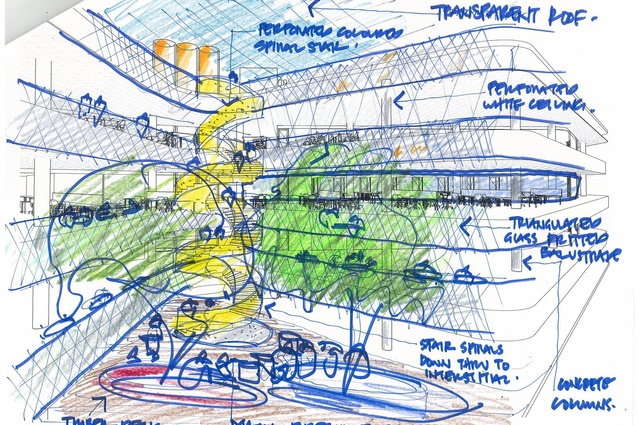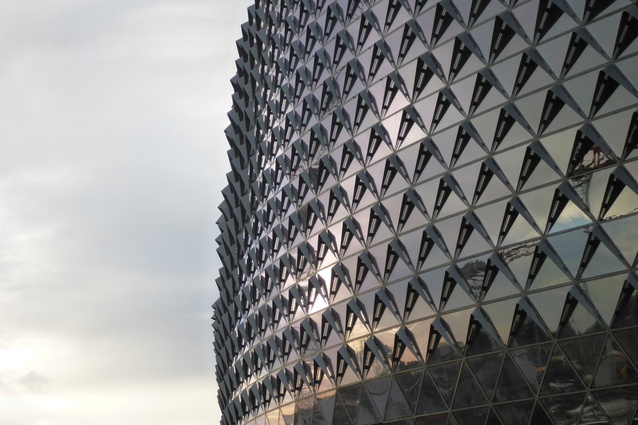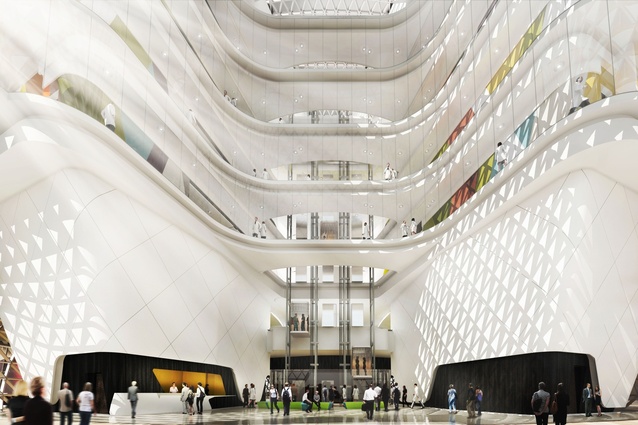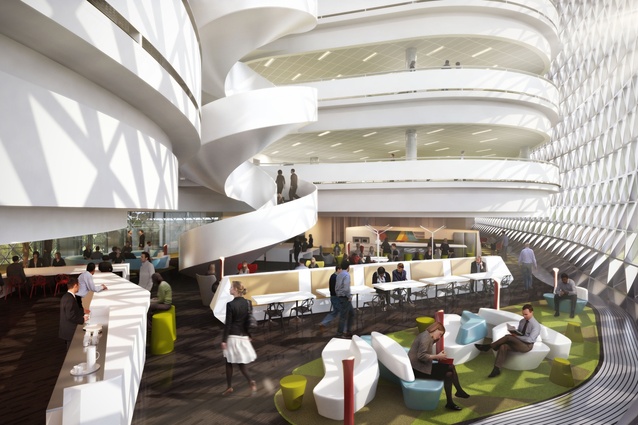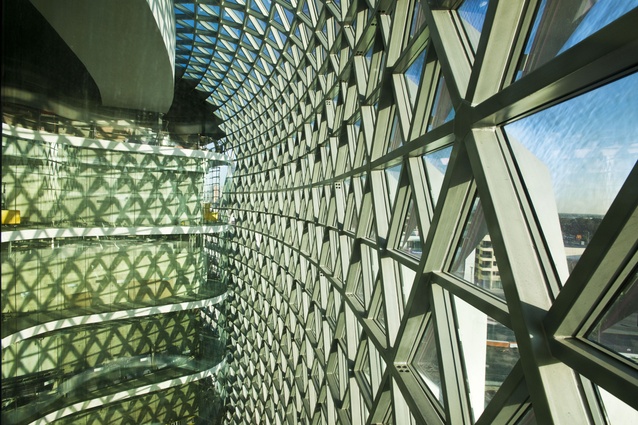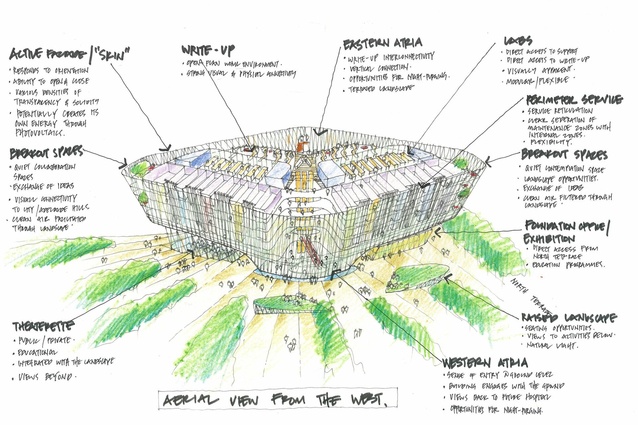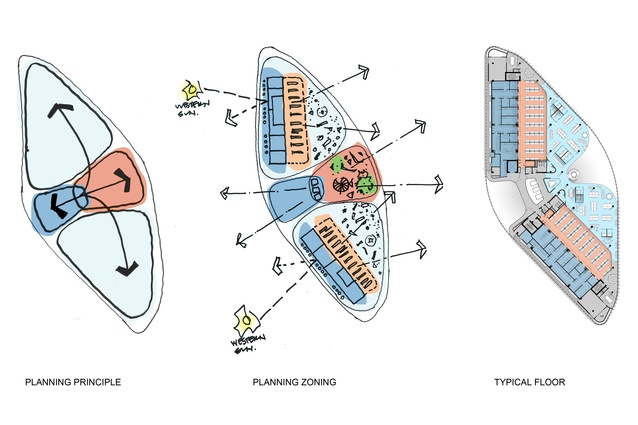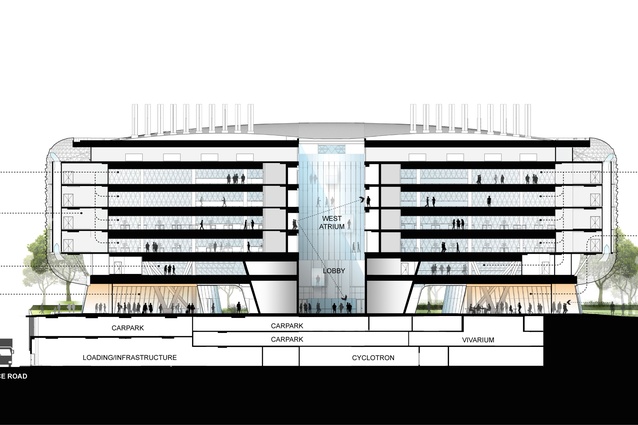The SAHMRI set to open
As the South Australian Health and Medical Research Institute (SAHMRI) prepares to open in Adelaide on 29 November, Woods Bagot offers a sneak peek at the new collaborative research facility.
On Friday 29 November 2013, Adelaide’s latest research facility – the South Australian Health and Medical Research Institute (SAHMRI) – will be officially opened in the heart of Adelaide’s new medical and health precinct, west of the city. This sneak peek into the design thinking of a highly specialized building typology is courtesy of Woods Bagot.
Design statement
Designed by Woods Bagot, the SAHMRI accommodates up to 675 researchers from South Australia and beyond in approximately 25,000 square metres of space within a sculptural building in the heart of Adelaide’s new medical and health precinct, west of the city.
The SAHMRI’s central proposition was to create a liberating new lab typology that promotes collaboration and medical discovery, attracting the best researchers from around the world. The built form of the SAHMRI acknowledges its sense of place within the green belt of the Adelaide parklands, seamlessly interacting with its surroundings, including Adelaide’s public transport, cycling and walking networks. The architecture is lifted, creating an open ground plane in an integrated landscape, opening the building to the public as well as users, allowing for greater activation and porosity through the site. Its forecourt, adjacent to the new hospital, encourages interaction and exchange by staff, visitors and the general public.
Derived from its unique site geometry and the need to create a forecourt entry adjacent to the new hospital to the west, the SAHMRI’s sculptural, iconic form is characterized by a striking transparent facade that unifies the organic diamond-shaped plan while showcasing the two atria inside the building.
Inspired by the skin of a pine cone, the building’s unique triangulated dia-grid facade responds to its environment like a living organism, acting as an articulated sunshade that deals with sunlight, heat load, glare, and wind deflection, while maintaining views and daylight. Following an intensive environmental analysis with consultants Atelier 10, Woods Bagot used parametric modelling tools to integrate environmental, programmatic, and formal requirements into the facade.
As part of an innovative sustainability program, the project is the first laboratory building in Australia designed to achieve a LEED Gold rating. Woods Bagot worked collaboratively with Atelier 10 to conduct extensive tests, adjusting the building form to achieve its best solar orientation through passive design of floor plates that respond to the internal program and provides maximum daylight where needed.
The SAHMRI facility is designed to accommodate up to 675 researchers, providing nine fully flexible wet and dry laboratory modules as well as a vivariums, cyclotron, and associated public areas. Woods Bagot worked closely with laboratory design specialists Research Facilities Design (RFD) to determine the current and potential needs of scientists working at the facility. A typical building floor plate consists of two research lab modules which can accommodate a dry lab or wet lab fit-outs. The key driver of the building design is to foster collaboration between researchers, achieved by the introduction of atria and bridges. The visual connection between floors and interconnecting spiral stair will encourage and enhance collaboration between researchers.
The write-up spaces on the adjacent north and north-east side is based on a modular design of workplaces from open plan to enclosed meeting rooms and quiet spaces. A large 10.2-metre column layout allows for efficiency and flexibility. The facade allows maximum daylight into these areas as well as borrowed light to the laboratory spaces and enhances external views, creating a healthier internal environment. Transparency also allows the outside views to the internal workings of the building promoting the importance of the activities within.
Read the ten global trends in laboratory design by Leslie Ashor from Research Facilities Design (RFD), a collaborator with Woods Bagot on the SAHMRI.




